Designing and 3D printing a lamp
Since I got a 3D printer, I have done the obligatory amount of downloading other people’s models and printed them out.
But I wanted to try my hand at the “whole process” - designing and printing a 3D object. I also wanted it to be something practical.
These LED strip controllers are very cheap and highly available (on Aliexpress and
similar). 
They come in various combinations of connectivity (RF/wifi/zigbee) and channels (single colour, CCT, RGB, RGBCCT). They are very simple to wire, and require no messing with mains voltage.
They are also extremely small, you can squirrel them away anywhere.
As far as the actual designing went, I had had a few options:
- OpenSCAD
- Fusion360
- FreeCAD
I’d tried FreeCAD briefly in the past and couldn’t get over the learning curve.
I knew Fusion360 was very popular in the community, so I gave it a go. I personally find it a terrible piece of software - a pretty clunky web app trying to be a real desktop app, with horrible cloud integration up-sell. I get that it’s a commercial product with a free version, but I still hated it with a passion.
OpenSCAD appealed to me (as a programmer), and I was familiar with CSG modelling from playing around with POV-Ray back in the 90s. I spent a fair bit of time with this iteration, but I found it difficult. While it is parameterised by its very nature, dealing with things like co-incident surfaces and no easy way to reference from other parts of geometry makes it difficult to work with.
So I returned to FreeCAD, sat down with the tutorials and started to learn the basics.
Obviously, I got there in the end! I’m still no FreeCAD expert (by a long stretch), but I can model something basic and take advantage of the parameterisation.
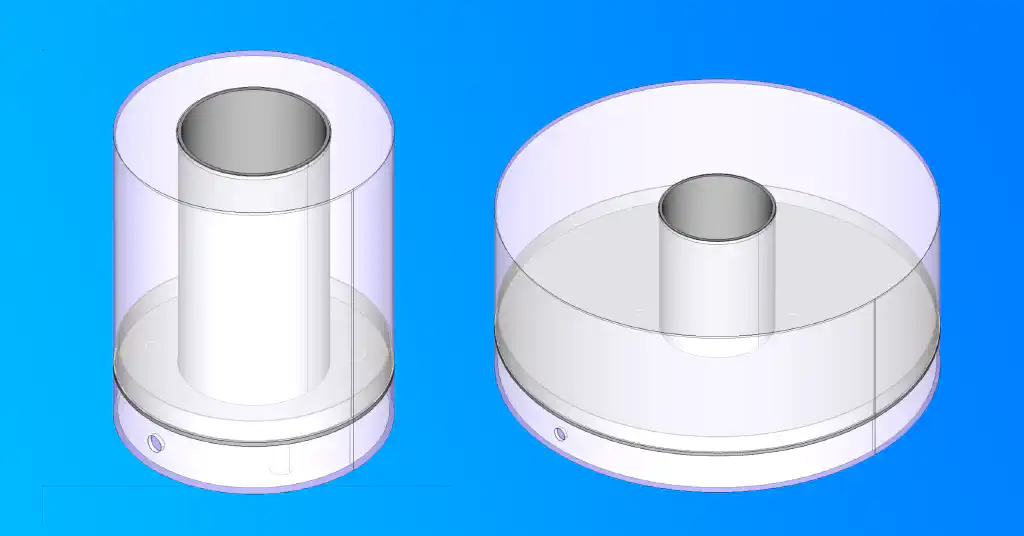
The easiest way to turn a strip of LED’s into a lamp is to wrap the strip around a central column. The LED strips are backed with adhesive, but I found some hot glue was also needed to keep them in place.
A word of warning - bunching each rotation of strip right next to the previous will probably result in a problem - the LED’s do get warm (especially at maximum brightness) and concentrating them in this way will probably result in the PLA either sagging or perhaps melting altogether.
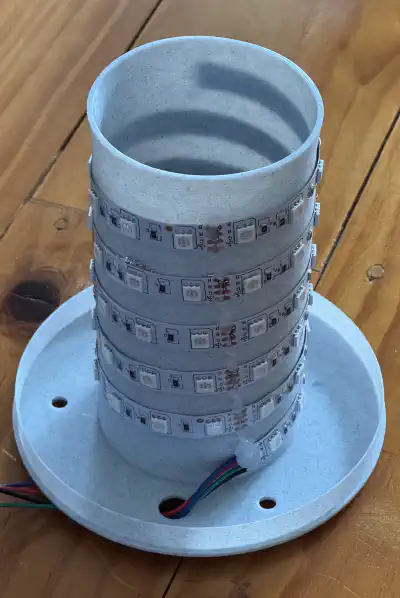
Trial and error revealed to me the correct spacing of each rotation. Here is an error from one of those trials:
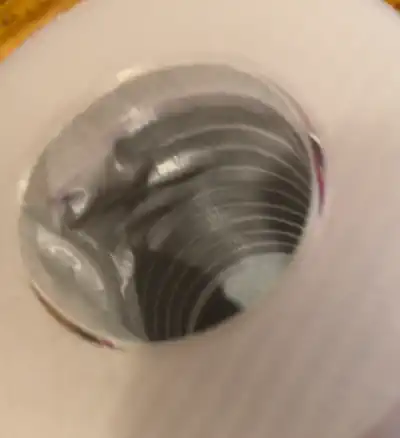
The wires from the LED strip are routed through a hole in the bottom to connect to the LED controller. The base has plenty of space to fit the controller, a hole for the DC power jack and some posts to take heat set screw inserts.
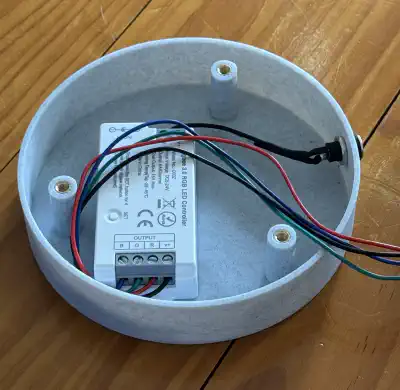
I thought about modelling a specific mount for the LED controller, but I decided there was no need, and they may be different sizes anyway. If you are making this and you don’t want it to rattle around, a piece of double sided tape would do the trick.
Lastly of course we need a cover. Printed in clear PLA, it provides just enough diffusion to hide the LED strips but let the light through.

It sits neatly on the base, held on by gravity.
The finished product came out great!
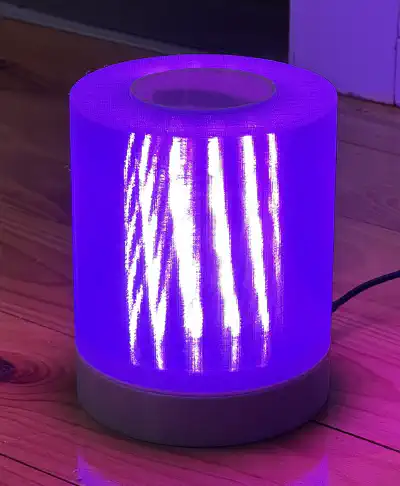
If I make another one, I will probably make the diffuser walls thicker (to make it less possible to see individual LED’s) and increase the column diameter to increase the number of LEDs used, for a brighter lamp.
You can download the models (STL and FreeCAD) here: https://www.printables.com/model/1067992-led-strip-lamp
Tags: 3dprinting freecad openscad